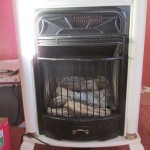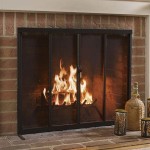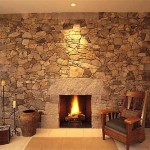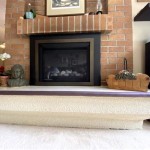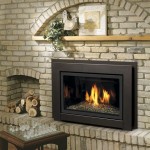DIY Fireplace Grate Heater: Enhancing Fireplace Efficiency
A fireplace, while traditionally an aesthetic focal point and a provider of supplemental heat, can be inefficient at distributing warmth throughout a living space. Much of the generated heat escapes through the chimney, rendering the fireplace a less effective heating solution. A DIY fireplace grate heater attempts to address this inefficiency by capturing and circulating heat that would otherwise be lost.
This article explores the concept of a DIY fireplace grate heater, detailing its functionality, potential benefits, construction considerations, and essential safety precautions. It aims to provide a comprehensive overview of building and utilizing such a device to enhance fireplace efficiency and improve heat distribution.
Understanding the Functionality of a Fireplace Grate Heater
A fireplace grate heater operates on a simple principle: capturing and redistributing heat. Standard fireplaces generate heat through the burning of wood. However, a significant portion of this heat rises directly into the chimney due to natural convection. A grate heater, typically constructed from metal tubing, is designed to sit within the fireplace and surround the burning wood. This tubing is configured to maximize surface area exposure to the fire.
The core functionality involves circulating air through the metal tubing. As the fire heats the tubing, the air inside also heats up. This heated air is then forced out of the tubing, typically through vents or outlets positioned towards the room. This forced convection creates a more efficient heat transfer mechanism, directing warmth into the living space rather than allowing it to escape up the chimney. The circulation is usually achieved using a fan, which can be powered by electricity or, in some more ingenious designs, by the heat itself through thermoelectric generators.
The effectiveness of a fireplace grate heater is directly related to the design of the grate, the material used, and the efficiency of the air circulation system. A well-designed system will maximize heat absorption from the fire and effectively distribute the heated air into the room, resulting in a noticeable improvement in the overall heating efficiency of the fireplace.
Key Considerations for Building a DIY Fireplace Grate Heater
Constructing a DIY fireplace grate heater requires careful planning and execution. Several factors must be considered to ensure both functionality and safety. The following points outline crucial aspects of the design and construction process.
Material Selection: The choice of materials is paramount. The tubing used for the grate must be able to withstand high temperatures without warping, melting, or releasing harmful fumes. Steel or copper tubing are common choices, though steel is generally preferred for its higher melting point and affordability. The gauge (thickness) of the tubing is also important; thicker tubing will retain heat longer and be more durable. All welding should be performed by a qualified welder to ensure structurally sound and airtight joints. Improperly welded joints can leak smoke and carbon monoxide, posing a serious safety hazard.
Design and Dimensions: The dimensions of the grate must be carefully tailored to the specific fireplace. It should fit comfortably within the firebox, allowing sufficient space for airflow and wood placement. The design should maximize surface area exposure to the flames, typically achieved by arranging the tubing in a grid-like or coil-like pattern. The placement of air intake and exhaust vents is also critical. Intake vents should ideally be positioned at the bottom of the grate to draw in cool air, while exhaust vents should be directed towards the living space at an upward angle to promote effective heat distribution.
Air Circulation System: The air circulation system is a critical component of the grate heater. A fan is typically used to force air through the tubing. The fan should be appropriately sized for the grate to ensure sufficient airflow without being excessively loud. Consider using a variable-speed fan to control the amount of heat output. Alternatively, explore the use of thermoelectric generators (TEGs) which can generate electricity from the heat of the fire to power a small fan. This eliminates the need for an external power source, but the output is usually limited.
Safety Features: Implementing safety features is non-negotiable. A carbon monoxide detector should be installed in the room where the fireplace is located, along with functional smoke detectors. Ensure the grate is stable and cannot tip over easily. Consider adding a safety shield or guard to prevent accidental contact with the hot tubing. Regularly inspect the grate for any signs of damage or wear, and address any issues promptly.
Potential Benefits and Drawbacks
A DIY fireplace grate heater offers several potential benefits, primarily related to improved heating efficiency and reduced energy consumption. However, it also presents certain drawbacks that must be carefully considered.
Improved Heating Efficiency: A well-designed grate heater can significantly improve the heating efficiency of a fireplace. By capturing and circulating heat that would otherwise be lost up the chimney, it allows for a more effective distribution of warmth throughout the room. This can lead to a reduction in the reliance on other heating sources, such as central heating systems.
Cost Savings: By improving heating efficiency, a grate heater can potentially lead to cost savings on energy bills. The extent of these savings will depend on the frequency of fireplace use, the efficiency of the grate heater, and the cost of alternative heating sources.
Reduced Reliance on Fossil Fuels: For those who primarily use wood as a heating source, a grate heater can contribute to a reduced reliance on fossil fuels. By making wood-burning more efficient, it can minimize the need for supplemental heating from propane, oil, or electricity.
Potential Drawbacks: Several potential drawbacks must be considered. Building a grate heater requires time, effort, and potentially specialized skills. The cost of materials and equipment can also be significant. There is also a risk of improper construction, which can lead to reduced efficiency or, more seriously, safety hazards. Furthermore, the added weight of the grate within the firebox can potentially damage the fireplace over time. Regular cleaning and maintenance are essential to prevent creosote buildup and ensure proper functionality.
Safety Considerations: The most significant concern is safety. Improper construction or use of the grate heater can increase the risk of carbon monoxide poisoning, chimney fires, and other hazards. It is essential to follow all safety precautions and consult with qualified professionals if necessary. Regular inspection and maintenance are critical to ensure the safe and efficient operation of the grate heater.
Before undertaking a project of this nature, a thorough understanding of fireplace dynamics, metalworking, and safety protocols is paramount. While the potential benefits of a DIY fireplace grate heater are attractive, a cautious and informed approach is vital to ensure both performance and safety. It is also prudent to check local building codes and regulations to ensure compliance before constructing and using such a device.
The effectiveness of a DIY fireplace grate heater is substantially affected by the type of wood used. Hardwoods, such as oak and maple, burn hotter and longer than softwoods, like pine and fir. Hardwoods also produce less creosote, a flammable byproduct that can accumulate in the chimney and pose a fire hazard. Therefore, using seasoned hardwoods is recommended to maximize heat output and minimize the risk of chimney fires. Seasoned wood refers to wood that has been properly dried, typically for at least six months to a year, to reduce its moisture content.
In addition to the type of wood, the way the wood is stacked within the fireplace also influences the efficiency of the fire and the grate heater. A well-stacked fire allows for proper airflow, which is essential for complete combustion. Avoid tightly packing the wood, as this restricts airflow and can lead to incomplete combustion, resulting in more smoke and less heat. A simple method for stacking wood is the log cabin style, where logs are placed in alternating layers to create a square or rectangular structure. This allows for ample airflow around the logs, promoting efficient burning.
The location and type of air vents in the fireplace grate heater are also crucial for optimizing heat distribution. Vents positioned at the bottom of the grate draw in cooler air from the floor, while vents at the top expel warmer air into the room. The angle of the exhaust vents can also be adjusted to direct the heated air towards specific areas of the room. Consider experimenting with different vent configurations to find the optimal heat distribution pattern for the specific space.
The use of a damper is also an important consideration. The damper is a metal plate located in the chimney that can be opened or closed to control the airflow. When the fireplace is not in use, the damper should be closed to prevent warm air from escaping through the chimney. When the fireplace is in use, the damper should be opened to allow smoke and combustion gases to vent properly. However, opening the damper too wide can cause excessive heat loss, while closing it too much can lead to smoke buildup in the room. Finding the right damper setting is essential for maximizing heat efficiency and preventing safety hazards.
Furthermore, regular cleaning of the fireplace and chimney is crucial for maintaining safety and efficiency. Creosote, a flammable substance produced by burning wood, can accumulate in the chimney and pose a significant fire hazard. The National Fire Protection Association (NFPA) recommends that chimneys be inspected and cleaned at least once a year, or more frequently if the fireplace is used regularly. A professional chimney sweep can safely and effectively remove creosote and other debris from the chimney, ensuring its proper functioning.

And Easy Fireplace Heater 5 Steps Instructables

Learn More About The Diffe Styles Of Fireplace Grate Heaters Cast Iron Heat

Efficiency Of Fireplace Blowers And Fans New Fireplaces Trends Design Ideas Кирпичный камин Теплообменник Дизайн камина

Tube Fireplace Grate Heater For Zc Fireplaces

This Is A Great Small Area Heater For Smaller Fireplace Rated At Over 28 000 Btu Of Heat It Delivers Mor Blower Gas

Grate Heater Wikipedia

21 Wood Stoves Ideas Rocket Burning Stove

Cozy Grate Fireplace Heater Woodland Direct

Medium Hard Times Heater Heavy Duty Tube Blower Fireplace Grate Heat E Hastyheat

Grate Heater With Masonry Fireplace Doors Customized
Related Posts

